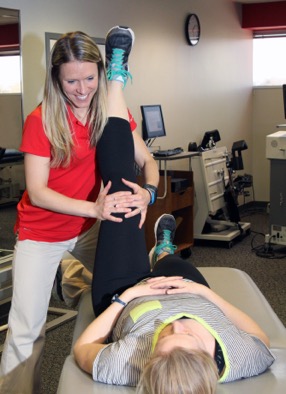Apr 18, 201825 Years of Results

Twenty-five years ago, it became mandatory for every Hawaii high school with interscholastic sports to employ at least one full-time athletic trainer. That law made Hawaii a nationwide leader and continues to reap benefits to this day.
An article from the Honolulu Star Advertiser, reports that Hawaii is still the only state to require an athletic trainer at every high school. Along with the direct benefit for student-athletes, having athletic trainers in place has allowed a wealth of data about injuries to be collected.
“It was definitely a big step for the health and welfare of the student athletes,” Dwight Toyama, former Executive Director of the Oahu Interscholastic Association and Department of Education Athletics Specialist, said. “This thing really had a domino effect, in a good way. One of the things – emphasized was data, data, data. That was pounded into the [athletic] trainers.”
One of the big advantages of this data is that athletic trainers who are seeing the injuries firsthand are making the reports. In turn, this offers an advantage in accuracy for researchers.
“They have a good program,” John Leddy, MD, Professor of Rehabilitation Sciences, Director of Outcomes Research, and Medical Director of the Concussion Management Clinic at the University at Buffalo, said. “They have a lot of good data, the only state in the country (with that much), and it’s supported well by the state. They have a lot of potential to collect some good information and get published.”
Much of that data has pertained to concussions, giving the state a leg up on issues related to head injury management.
“The work that is happening there in concussion research and management is exemplary,” said Emily Kosderka, MS, ATC, Assistant Professor of Exercise Science at Concordia University-Portland. “Through the HCAMP [Hawaii Concussion Awareness Management Program] – Hawaii is out in front in what we’re doing to help people get better.”
Other initiatives in Hawaii aimed at preventing traumatic brain injuries include requiring each high school athletic coach to obtain concussion training annually. High school student-athletes also receive baseline testing and attend concussion awareness clinics. Moving forward, there are hopes to expand these offerings for younger student-athletes.
“I think we can say we are leading the country in concussion management which encompasses the entire state’s high schools,” said Ross Oshiro, MS, ATC, LMT, Coordinator of Athletic Training at The Queen’s Medical Center in Honolulu and founder of HCAMP. “We can thank the legislators for supporting us to protect our youth and high school athletic trainers and administrators for treating our student-athletes. As far as what needs to be done, we are working on educating our middle schoolers. We need to gather more research on how the educational tools are working on this age group before moving down to the elementary level.”



